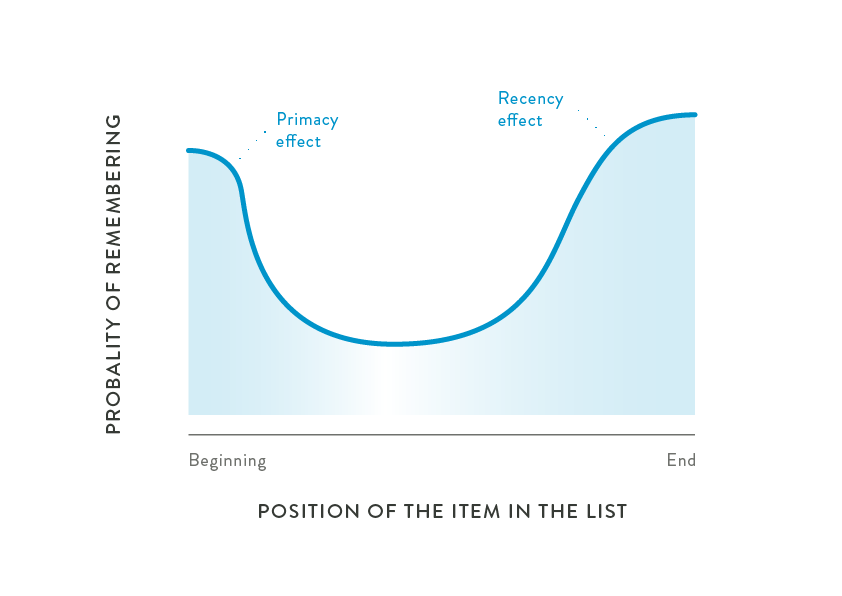When presented with a list of words, we tend to remember the first few and last words, whilst all of the information in the middle is easily forgotten.
In psychology, this is known as the serial position effect.
Here, we explain the theory behind the concept and demonstrate how marketers can put the serial position effect in to practice within modern marketing.
Scientifically proven
Hermann Ebbinghaus (1850-1909) originally coined the term ‘serial position effect’ after conducting a number of memory studies on himself, and in 1962, Murdock demonstrated how positioning affects recall with a multi participant experiment.
Murdock asked the participants to learn a list of words, varying in length from ten to 40, and requested each person to free recall them.
He found that the probability of recalling any word depended on its position in the list, or its serial position. Specifically, the improved recall of words from the beginning of the list is called the primacy effect, and the recency effect refers to the tendency for words at the end of the list to be remembered.

Murdock suggested that words at the start of list were easily recalled because they were stored in long term memory (LTM) and the words from the end of the list were put into the short term memory (STM), which typically holds around seven items.
The words in the middle were present too long to be stored in STM and were not there for enough time to make it to the LTM, resulting in their loss.
Marketing the serial position effect
As marketers, we’d like to think that our audience absorbs every element of our advert, article, or business proposal, but the harsh truth is that they don’t.
This is why we must carefully position every marketing message.
At the initial planning stage, decide which unique selling points are most likely to make the biggest impact on converting your potential customers and clients in to people who pay for your services or product. Wherever your selling points appear in a list, whether it’s a content marketing article, radio advert or press release, make sure the deal breakers are listed at the start and the end.
Online, your important links or lead generation input forms should be at the top and the bottom of a web page. This will allow you to capture every type of reader, from the user who wants a quick, easy hyperlink without lengthy reading to the individual who wants to read a page in its entirety, which is who you add the sign-off link for so it can quickly nestle into their STM.
When it comes to booking advertising space, the serial position effect should be considered when choosing your advert’s slot in the running schedule or on the page listing, and pay particular attention to the placement of your television adverts. On this medium, the recency effect tends to be stronger than the primacy effect with viewer recall stronger for adverts shown at the end of a commercial break, perhaps because watchers are paying closer attention to the set when awaiting the return of their show.
And of course, it’s the serial position effect that has every marketer breaking their back to get their SEO skills down to a T. You want to appear as high up on a search engine’s listings as possible, preferably in the top seven search results, as users will rarely scour the links for long enough to score you a position in their long term memory.
If you enjoyed reading psychology for marketers, you may also be interested in learning about sensory branding, the method that marketers use to engage our bodies with their products. Click to find out how brand use smell to sell, sound to resonate and touch to convert today.
